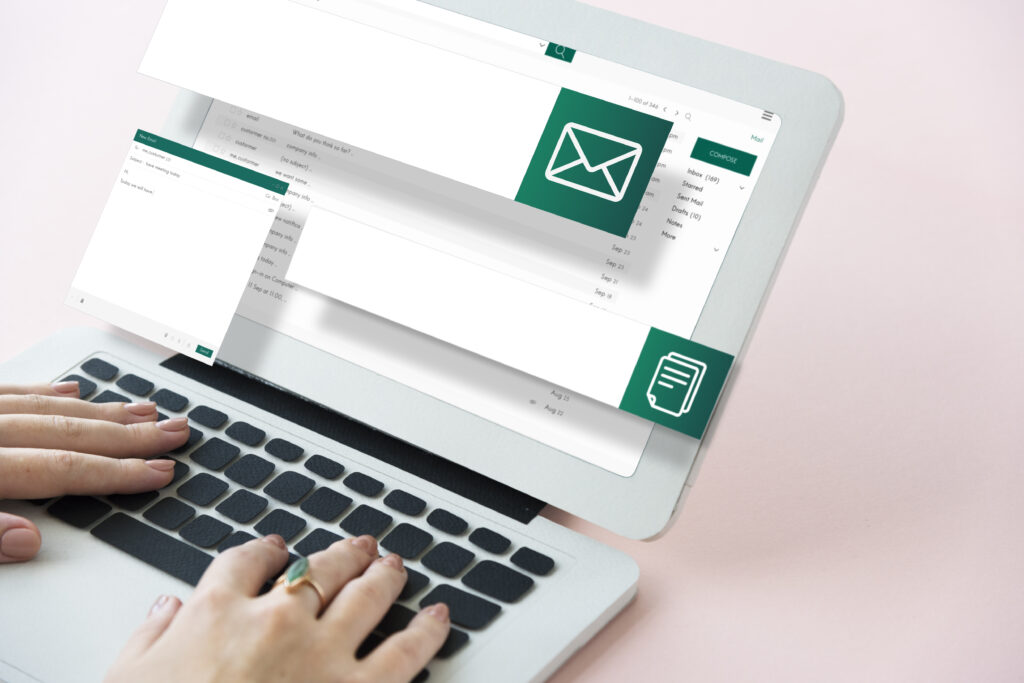Email Marketing is certainly one of the most powerful tools a business can use to build relationships with customers.
In fact, there are nearly 4.26 billion email users worldwide, and these numbers are constantly growing.
The email marketing market itself is expected to reach a whopping US$ 9723.71 million by 2028.
This means that if you have a business, setting up an email marketing strategy that works can really make a difference.
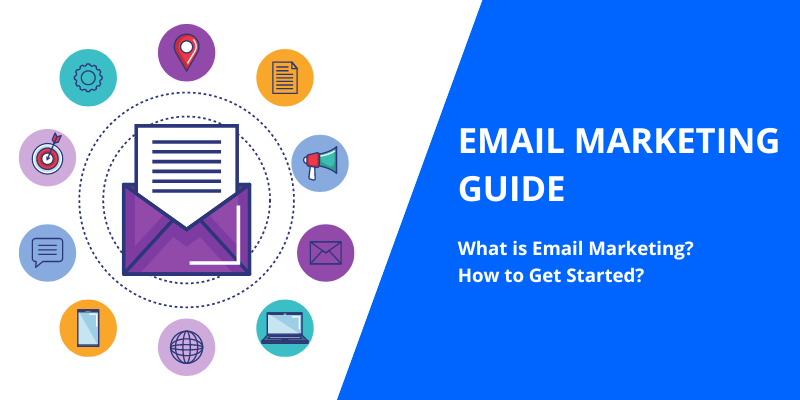
In this article, we’ll start by discussing the basics.
You’ve probably already heard about it, but you might still wonder what is email marketing and how to create successful email marketing campaigns.
We’ll break down the 5 steps to create email campaigns that convert and drive sales.
Plus, you’ll also find some tips on how to write personalized emails and which tools you can use to get the best out of your marketing efforts.
What is email marketing?
Email marketing is a direct marketing channel where businesses can communicate new products, sales, and updates directly to customers who’ve signed up for their email list.
It’s like having a direct line to your target audience, who are already interested in what you have to say – making it more likely to convert than other channels.
It’s one of the oldest forms of digital communication, yet it remains incredibly effective. Sure, we’ve got social media, live chat, and other flashy tools now, but email marketing still holds its own.
Types of Email Marketing Campaigns
Promotional emails
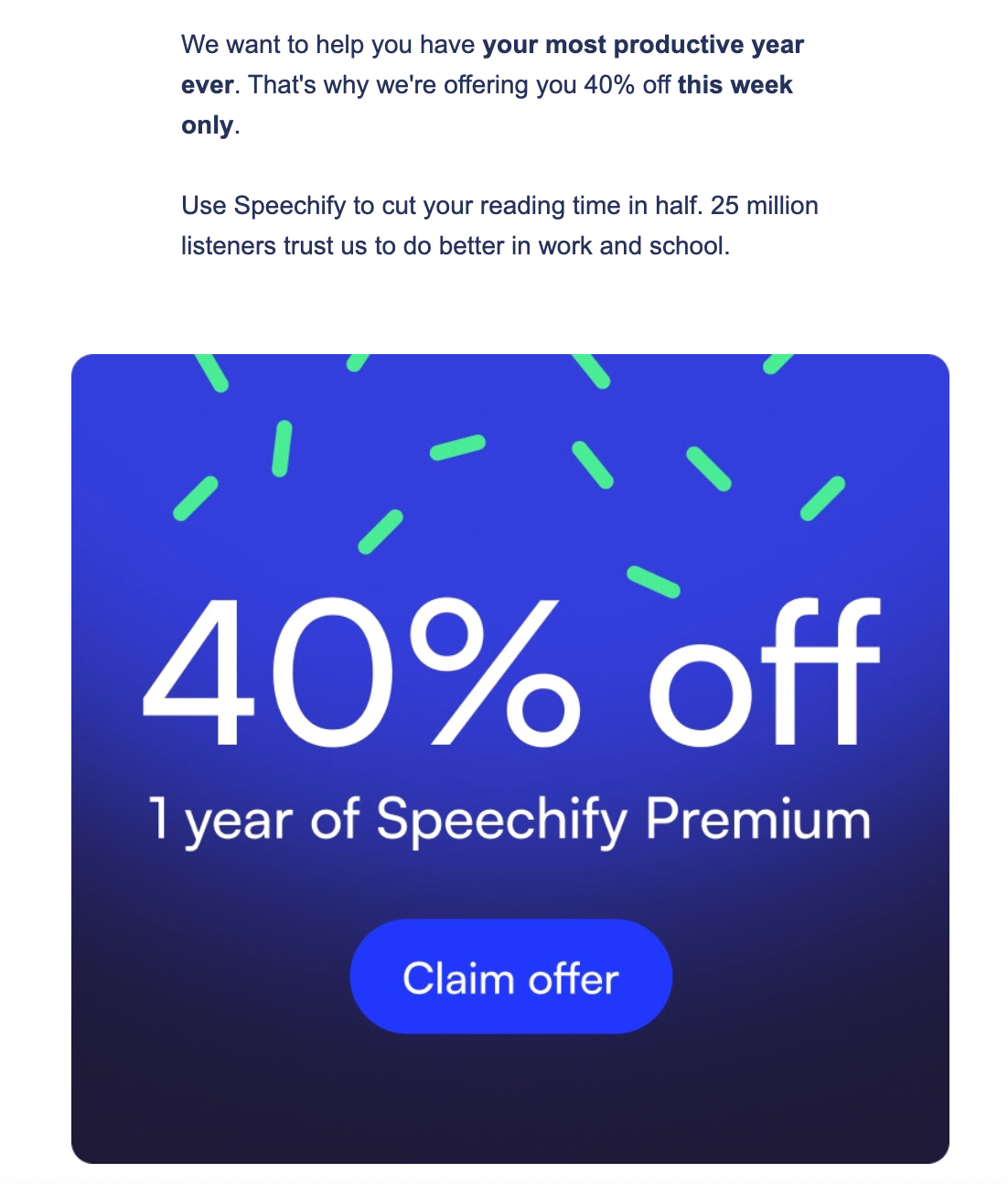
These are emails specifically crafted to show your business’s special offers, new product releases, or exclusive content.
A typical promotional email campaign isn’t just a one-off; it could be a series of emails, maybe 3 to 10, spaced out over days or weeks, ensuring your message is heard without overwhelming your audience.
Promotional messages have a clear call-to-action (CTA) that prompts the reader to take action, be it shopping, signing up, or downloading.
Informational emails
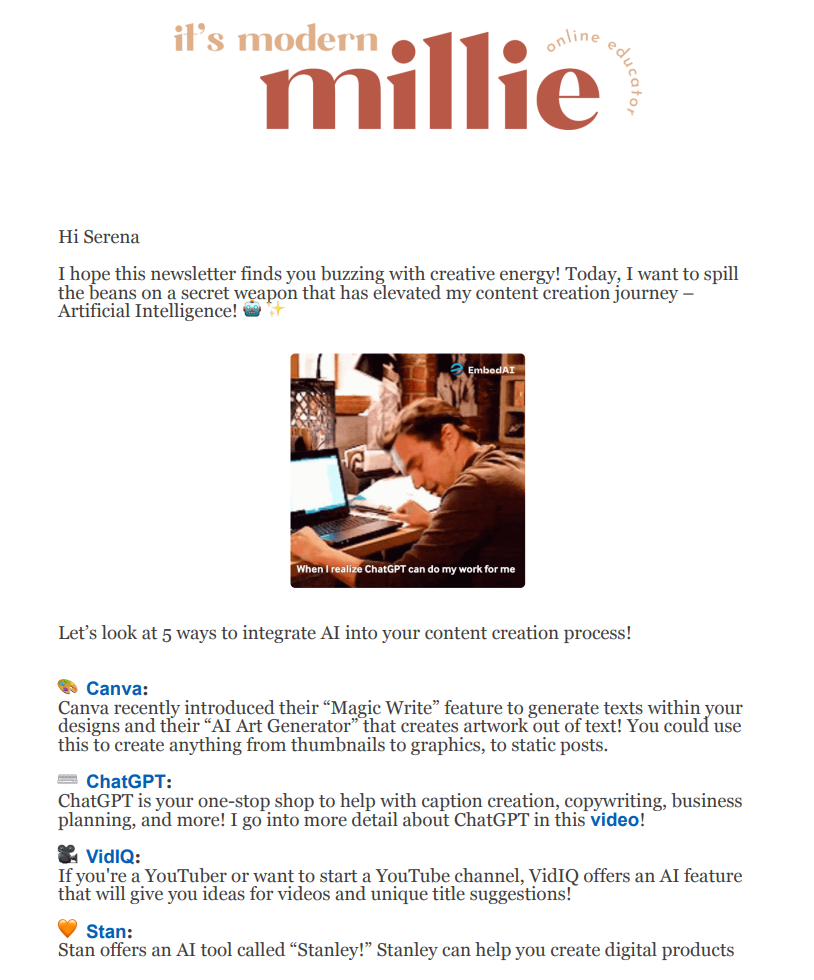
Informational emails are a key part of email marketing, where the goal is to inform rather than sell.
Among these, newsletters are pretty popular.
Why? Because they’re a direct way to share news about your business with your audience.
We’re talking updates like new milestones your business has reached, enhancements to your products, or even valuable content like case studies and how-tos.
They’re not just random emails; newsletters are sent at regular intervals – they could be weekly, bi-weekly, or monthly.
This regularity helps you keep in touch with your email subscribers without overwhelming them.
It’s like having a scheduled catch-up with your audience, keeping them in the loop and engaged with your brand.
Think of it as a friendly conversation where you’re sharing the latest and greatest from your business world.
Retention emails
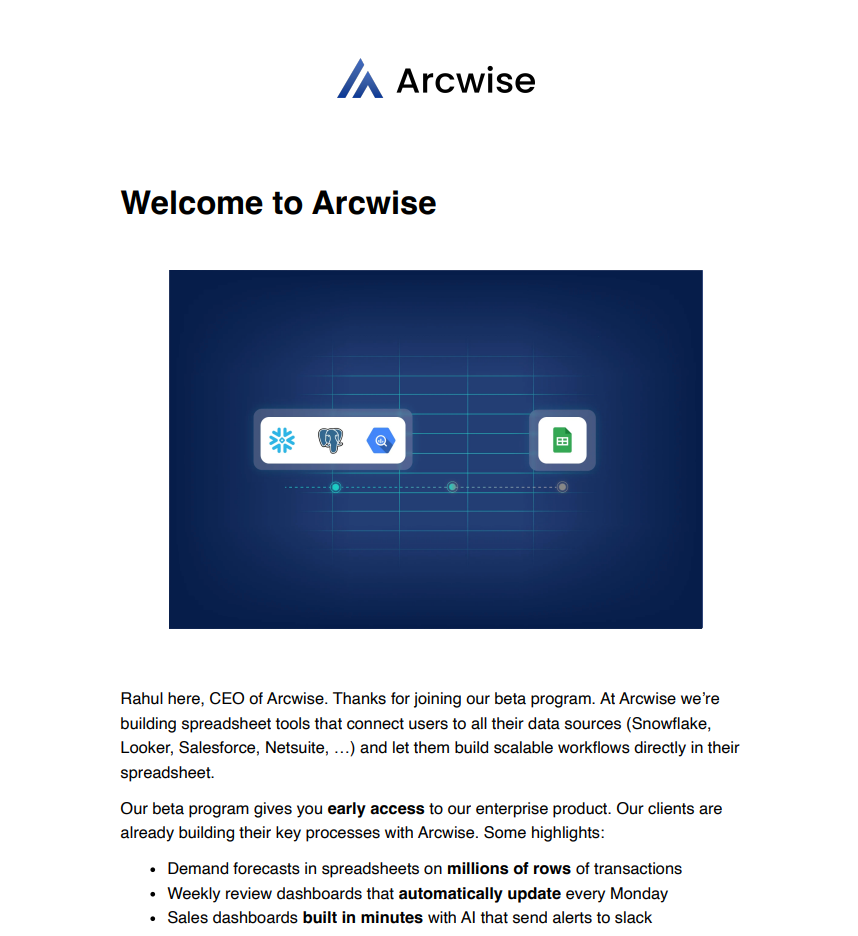
Retention emails are all about keeping your customers engaged and loyal.
These emails are key in email marketing because it’s more cost-effective to retain an existing customer than to acquire a new one. In fact, they are strategically designed to engage customers with your brand.
Think of retention emails as your tool for building a stronger relationship with your customers.
You could introduce them to different aspects of your product, share helpful tips on getting the most out of it, ask for their feedback through surveys, or even re-engage those who seem to be losing interest.
Some classic examples of retention emails include:
- welcome emails;
- how-to-use-our-product emails;
- achievement emails.
Transactional emails

Transactional emails are automated messages that kick in as a direct response to actions your customers take.
Let’s say someone buys an item from your shop – they instantly get an email confirming their order.
That’s transactional email in action. These aren’t just generic messages; they’re personalized based on the customer’s activity.
Think about the last time you got an order confirmation email – it’s reassuring, right? That’s the power of transactional emails.
They keep your customers in the loop.
Apart from order confirmations, other transactional emails include:
- Thank you emails;
- Password resets;
- Shipping Emails;
- Abandoned cart emails;
- Product review requests;
Email marketing in 5 steps
Set your goals
Take a moment to think about what you want to achieve with your email campaigns.
Your goals will shape everything from the type of campaigns you send to the audience you target and the content you include.
It’s not just about sending emails; it’s about having a clear direction.
Make sure to align your email marketing goals with your company’s wider marketing goals & KPIs.
Ask yourself: Are you aiming to drive new signups for your product? Generate leads for your sales team? Increase attendance at your events?
Maybe you’re focusing on raising more donations for your cause.
Whatever your goals, they should be specific, measurable, attainable, relevant, and timely.
To set these goals effectively, break down your broad objectives into actionable steps.
For example, if you aim to increase product signups, consider targeting your emails to educate potential customers about the benefits of your product.
Remember, a well-defined goal is the first step to a successful email marketing strategy.
Build an Email Marketing List
Step two in your email marketing journey is building an email marketing list.
What does this mean?
Simply put, it’s creating a list of email addresses to whom you’ll send your marketing messages. But remember, not just any list will do. You need a list that aligns with the goals you set in step one.
There are mainly 2 ways to build this list.
First, you might already have a list of contacts who know your brand and have interacted with you before.
You can import this list of existing contacts to get started.
If you don’t have a list of contacts, it’s time to build a new list from scratch.
This means collecting user emails through opt in forms on your website, social media channels, or during events.
The key here is to make sure that the people on your list are genuinely interested in your brand. It’s not just about the quantity of emails; the quality of your audience matters more.
Choose the Type of Emails you Want to Send
Step three of your email marketing campaign is choosing the type of emails you want to send.
It’s like picking the right tool for the job.
Remember, different types of emails serve different purposes.
Let’s say you’ve just launched a new product. Your goal? Get people interested in buying it.
In this case, a promotional email offering a discount might be just what you need to catch their attention and encourage a purchase.
Or, you might want to explain to your customers the value and benefits of your new product.
Then, a retention email explaining how to use the product and its benefits would be more appropriate.
It’s all about matching the type of email to your specific goals.
Are you looking to inform, promote, engage, or retain? Your choice here will directly influence the success of your campaign.
Create Email Campaigns
To create a successful email marketing campaign, follow these 6 steps:
- Structure Your Campaign for Easy Reading: You know when you open an email, and it’s just a huge block of text? Don’t do that. Use bold, capital letters, and white spaces between paragraphs to make your email skimmable and easy on the eyes.
- Use Images and Visuals to Boost Engagement: A picture is worth a thousand words, right? Insert relevant images and visuals to break up the text and add a splash of color or humor.
- Personalize Your Email Campaigns: Make your emails feel like they’re coming from a friend, not a faceless brand. Tailor them to reflect your unique style and voice.
- Ensure Your Campaign Is Relevant to Every Subscriber: This is crucial. If someone signed up for SaaS service updates, they probably won’t appreciate health tips. Stay on topic.
- Make It Easy to Convert: Your call-to-action (CTA) should stand out. Ensure your links and buttons are working, visible, and compelling. Don’t make your readers hunt for how to take the next step.
- Send More Than Promotional Content: Mix it up! Along with promotions, include content that educates, entertains, or informs. Share fun facts, industry insights, or helpful tips related to your niche.
Mesure results
The final step of your email marketing strategy is measuring your results.
After sending out your first email, the real game begins: tracking its success.
It’s not just about patting yourself on the back for a job well done; it’s about understanding how your audience is interacting with your emails.
Are they opening them? Are they clicking on the links inside? This data is gold. It tells you what’s working and what’s not.
Measuring results isn’t just a one-time task. It’s an ongoing process to refine and improve your marketing strategy.
You might discover that certain subject lines get more opens or that specific calls-to-action drive more clicks.
Maybe you’ll realize that your emails perform better on certain days of the week.
Use this information to tweak and adjust your future campaigns.
Remember, the goal is continuous improvement, making sure each email is more effective than the last.
So, after each campaign, take a moment to analyze the results. What did your subscribers love? What didn’t resonate? That’s how you make your next campaign even better.
How to write marketing emails?
Define an email marketing strategy
Writing marketing emails that truly convert isn’t just about putting words on a screen.
First things first, you need a solid email marketing strategy – Like the one we discussed in the paragraph above.
Design your marketing email
After you’ve got that strategy in place, the next step is designing your email.
This isn’t just about aesthetics; it’s about creating a layout that guides your reader’s eyes right where YOU want them.
Designing your marketing email can be pretty easy, even if you’re not a tech whiz.
Here’s how to make your email design stand out:
- Brand Awareness: Make sure your email reflects your brand identity. Include your logo and use your brand’s color scheme and fonts. Consistency reinforces brand recognition.
- Concise Text: Your message should be concise and clear. Long paragraphs can overwhelm readers. Stick to the essentials and make every word count.
- Visual Harmony: Incorporate images that complement your message and reflect your brand’s personality. Visuals can break up text and add interest, but remember to balance them with your written content.
- Clear CTAs: What action do you want readers to take? Make your call-to-action (CTA) stand out. It should be easily identifiable and enticing enough to click.
- White Spaces: Don’t cram every inch with text or images. White space is your friend – it makes your email more readable and aesthetically pleasing.
- Optimize for Mobile Devices: Many people read emails on their phones, so your design must look good on smaller screens. Responsive templates automatically adjust to different device sizes, ensuring a great user experience.
Write your email copy
Finally, there’s the email copy itself. This is where your message comes to life.
It’s not just about filling a template; it’s about engaging, persuading, and motivating your readers to take action.
Keep it clear, keep it interesting, and most importantly, make sure it resonates with your audience. Here’s how you can do it:
- Focus on Audience Needs: Always start by asking, “What does my audience need from me? How can I add value and answer their doubts?”
- Express Your Brand Personality: Let your brand’s character shine through in your writing. Whether it’s professional, quirky, or compassionate, be true to your brand.
- Narrate a Story: Stories capture attention. They can be a powerful way to illustrate a point or connect emotionally with your audience.
- Spark Curiosity: Begin with a compelling subject line. It’s your first impression; make it count to stir interest and encourage opening the email.
- Conversational Tone: Write as you speak. A conversational tone makes your email more relatable and engaging.
- Readable Format: Use short paragraphs and bullet points. This enhances readability and keeps your audience engaged.
- Personal Signature: End with the name of a real person, not just your brand.
Email Marketing Tools
Email marketing platforms are designed to automate and make the process of creating, sending, and managing your email campaigns much easier.
Here’s how they work and what they can do for you:
- Automation: These tools automate repetitive tasks. For example, you can automate the sending of welcome emails to new subscribers or follow-up emails based on customer actions.
- Segmentation: An email marketing tool can help you segment your audience based on behavior, preferences, or demographics, allowing you to target your campaigns.
- Analytics: They can also give you insights into campaign performance. You can track open rates, click-through rates, and conversions, helping you understand what is working and what needs to be revised.
- Design: Most email marketing tools offer drag-and-drop editors and customizable templates, making it easy to create visually appealing emails without needing design expertise.
Some popular email service providers include:
- Sendinblue: Known for its SMS marketing and email automation.
- Mailchimp: Offers a user-friendly interface with diverse integration options.
- Omnisend: Great for e-commerce with its advanced segmentation features.
- GetResponse: Ideal for creating automated marketing funnels.
- Constant Contact: Excellent for small businesses with its ease of use.
- Active Campaign: Stands out for its CRM and advanced email automation capabilities.
Frequently Asked Questions
Benefits of email marketing
Email marketing campaigns are cost-effective and have high conversion rates.
Compared to other marketing channels, an email marketing campaign is able to deliver more with less investment.
And it’s not just about sending messages; it’s about making meaningful connections with your audience without breaking the bank.
The conversion rates, compared to other marketing channels, are pretty high.
And, it’s not surprising, considering that emails not only land directly in your audience’s inbox, but are also direct to an audience that has already expess some interest in your brand – this means they are likely to make a purchase.
Disadvantages of Email Marketing
While email marketing offers numerous benefits, it’s important to consider its disadvantages, too.
One major drawback is the risk of your emails being marked as spam.
With inboxes inundated daily, even well-crafted emails can end up in the spam folder, never reaching the intended recipient. This not only limits your campaign’s effectiveness but can also harm your brand’s reputation.
Then, you should also consider the competition. Inboxes receive countless emails every single day, and the only way to succeed is to make content highly valuable for your readers.
Another consideration is the cost of email service providers. While many offer basic services for free or at low costs, as your mailing list and needs grow, so does the expense. Advanced features like automation, detailed analytics, and larger subscriber lists come at a premium.
This means as your business scales, you’ll need to allocate more budget towards email marketing, which could be a significant cost, especially for small businesses.
Is Email Marketing Outdated?
Absolutely not.
Consider this: virtually everyone has an email address, and most people check their email regularly.
Data consistently shows an increasing trend in email usage year after year – 347.3 billion emails are sent each day around the globe, marking a 4.3% increase from the previous year.
This growth highlights that emails are still relevant in our digital communication landscape, and unlike social media, where algorithm changes can unpredictably affect your content’s visibility, email marketing offers a more stable and controlled environment.
Basically, you’re not at the mercy of an algorithm’s whims – you have direct access to your audience’s inboxes.
How to Automate Your Email Marketing Campaigns?
To automate your email marketing campaigns in the best way, you’ll need to use an email service provider. These tools are designed to streamline and enhance your email marketing efforts.
Here’s how you can get started:
- Choose the Right Tool: Select an email marketing automation tool that aligns with your business needs. Options like Mailchimp, Omnisend, or HubSpot offer a variety of features for different marketing strategies.
- Define Your Audience Segments: Segment your audience based on criteria like behavior, demographics, or engagement level. This allows you to tailor your emails to specific groups for more effective communication.
- Set Up Triggered Emails: Create emails that are automatically sent based on specific triggers, such as a welcome email when someone subscribes to your list or a follow-up email after a purchase.
- Personalize Your Messages: Use the data you have about your subscribers to personalize your emails. Personalization can significantly increase engagement and conversion rates.
- Create Drip Campaigns: Drip campaigns are a sequence of emails sent out at predetermined intervals. They are useful for nurturing leads, onboarding new customers, or keeping your audience engaged.
- Monitor and Adjust: Regularly review the performance of your automated emails. Analyze open rates, click-through rates, and conversions to understand what works and what needs improvement.
When is the Best Time to Send a Marketing Email?
The best day and time to send marketing emails is Tuesdays and Thursdays around 10 AM and 3 PM.
